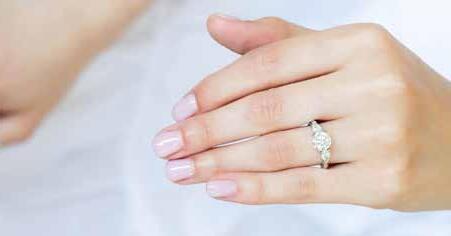
1 minute read
Cut
While some think that cut refers to the shape of the diamond, it actually refers to the proportions and symmetry of the diamond. It is in the art of cutting and polishing that a diamond truly achieves its greatness. Only those that possess great skill can produce the fine diamonds that Bailey’s features.

Advertisement



A polished diamond’s beauty lies in its complex relationship with light: how light strikes the surface, how much light enters the diamond, and how and in what form light returns to the eye. The result is a magnificent display of three attributes:
Brightness is the combination of all white light reflecting from the surface and interior of a diamond.
Fire describes the flares of color emitted from a diamond.
Scintillation describes the flashes of light you see when the diamond, the light, or the observer moves.
A polished diamond’s proportions affect its light performance which in turn affects its beauty and overall appeal. Diamonds with fine proportions, symmetry, and polish optimize their interaction with light and have increased brightness, fire, and scintillation.
Color
Although many think of gem-quality diamonds as colorless, truly colorless diamonds are actually very rare. Most diamonds used in jewelry are nearly colorless with tints of yellow or brown.
Color grades are determined by comparing each diamond to a master set. A diamond’s color is most accurately determined when it is not mounted in a setting. One reason for this is that the setting can introduce tints of its own color into the diamond. Also, the grader should view the diamond from the pavilion (the bottom) because the true color of a diamond can be “masked” by a high quality cut. Diamonds with superior cut and polish can look up to two color grades better when viewed face up. For these reasons, gemological laboratories such as the Gemological Institute of America (GIA) and the American Gem Society (AGS) will only grade diamonds un-mounted.
Diamonds also come in colors such as blue, pink, purple, red, green, orange, brown, and yellow and are commonly referred to as fancy colored diamonds. These diamonds, if natural in color, are even rarer and can command very high prices.





